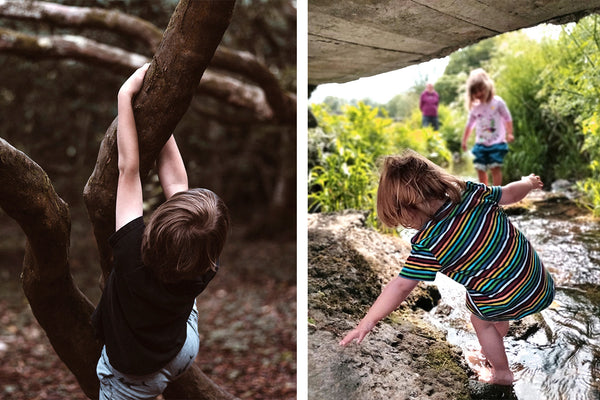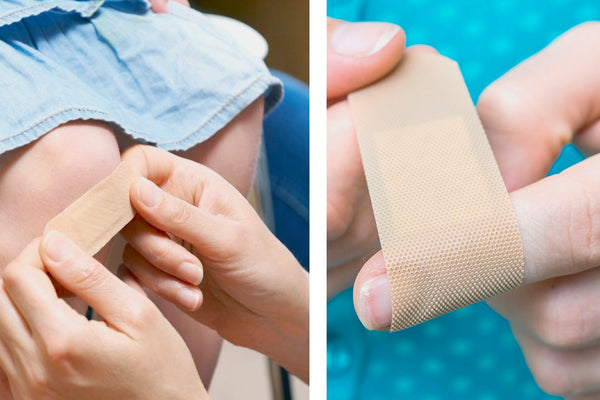Quality Wooden Toys
Quality Wooden Toys

I recently observed a group of children engaged in sustained play for an extended period of time (several hours) with only a hill and three gym mats. The play (completely child-initiated) involved placing the gym mats length-wise down a hill and then sliding, rolling and somersaulting down the hill onto the mats. This resulted in pile-ups, wrestling and lots of unbridled laughter. There were a few moments when a push and an angry word was exchanged, however, the children knew the rules of engagement and quickly corrected the offenders and reminded them that it was not okay to play like that, without much interference from a teacher. At the end of the play, I noticed muddy, grass-stained trousers, a few friction burns, one stubbed toe and a lot of grinning, out of breath, smiling faces.

I thought back to some of the centres that I have worked at in the past. I know that there are teachers that do empower children to take risks beautifully. However, I also know that in many centres this type of play would have resulted in numerous parent complaints and nervous teachers.
One of the biggest dangers facing our children and their play is our imaginations. As adults, we are incredibly gifted at the art of worrying, 99 per cent of which will never come into fruition. We see all the possible scenarios of “what could happen” and then we deem the situation as being too risky. Are we passing our worries and fears onto the children in our settings?
Children need opportunities to take risks and try things that they have never tried before. To run, climb, jump and to fall, make a mess and to even get the occasional scratch or experience a “learning injury” from time to time.

Think about the last time you were challenged by something… really challenged.
It might be that you were challenged with a weight-loss goal that took months of sacrifice and gruelling exercise to fit into a pair of skinny jeans or a difficult assignment that you grappled with until you and aced it! You might have thought, “this is too difficult, I should just give up!”
But, how good did feel when your hard work and persistence paid off? The feeling of accomplishment, joy and pride in your achievement which made you feel invincible and on top of the world.
This is the feeling that we deprive our children of when we see them struggling with something such as climbing a tree, jumping from a high box or an infant learning to crawl over the edge of a step and we “rescue them”. How would we have felt if, during the midst of our struggle our lecturer, partner or colleague had said to us, “that is too hard, stop doing this, this isn’t safe, you will hurt yourself”? How different would this have been if that same person had said to us, “I can see that you are feeling frustrated/nervous, I am here to help you if you need me” or “I can see that this is important to you, let’s think of a plan.”
Risky play combines stress and fun which accelerates brain development. It is stressful to climb to the top of the high tower or jump of the high box if you haven’t done this before. However, through learning how to manage themselves under stress and then recover is how children learn to be resilient under future stressors in life.
Risky play provides great practice for children on how to regulate their emotions.
In risky play, youngsters dose themselves with manageable quantities of fear and practise keeping their heads and behaving adaptively while experiencing that fear. They learn that they can manage their fear, overcome it, and come out alive. In rough and tumble play they may also experience anger, as one player may accidentally hurt another. But to continue playing, to continue the fun, they must overcome that anger. If they lash out, the play is over. Thus, according to the emotion regulation theory, play is, among other things, the way that young mammals learn to control their fear and anger so they can encounter real-life dangers, and interact in close quarters with others, without succumbing to negative emotions.
- Dr Peter Gray.

When we support children to take risks we reinforce that we trust them, and will support them with gentle guidance to achieve their goals. Our hope is that our children see challenges as part of learning and that learning is rewarding. That they can achieve anything with the right strategies, help and effort.
The ability to revel in risk-taking allows children to develop a growth mindset. By developing a growth mindset, our children will be more likely to try new things, persist with difficulty, put their hand up in class to ask a question or to volunteer and idea. In later years this mindset will stand them in good stead when applying for a job, backing their ideas in a staff meeting, asking for that raise, or even asking someone out on a date.
Not taking risks can lead children to have a fixed mindset about trying new things and they tend to play it safe. There is a tendency for children who are not allowed to take risks in the playground to strive for perfection and for them to give up or not even try if this perceived perfection cannot be achieved.
Play especially risky play helps children to develop their executive function – the parts of the brain in charge of decision-making. You see children don’t learn to make decisions by being told what to do. They learn to make decisions by making decisions.
Bumps and bruises are important feedback to our children’s bodies and brains that they need to improve their judgement. Their brains will learn to make better decisions and become better developed because of it.

There is a fine line between knowing when to intervene and when to sit on your hands, zip your lip and allow them to figure it out for themselves.
We have many rules and regulations designed to keep children and ourselves as teachers safe. It is can be tricky to know the difference between allowing children to be challenged by taking risks and hazards. It is important for us to keep our environments safe and to minimise or eliminate the hazards.
In conclusion, I ask you to examine yourself. As a teacher, your attitude and mindset are key. It is vital that you reflect on your own experiences and attitudes to risk.
Are we just saying no because of our own fears, anxiety and our need for control?

Instead of “Be careful” we could try fostering the child’s awareness by saying:
Help the child to problem solve by prompting:
(adapted from www.backwoodsmama.com)
I leave you with the wise words of Magda Gerber,
Education begins the moment that we see children as innately wise and capable beings.
- Magda Gerber
Written by Tanya Valentin
Leave a comment